Just like with humans, your dog needs regular dental cleanings to prevent problems with his dental health. Without good dental care, your dog can develop gum disease and periodontal disease just like you can.
When they do develop problems like gingivitis (inflammation of the gums), tartar buildup, and bleeding gums, these are signs of bigger problems. In fact, bleeding gums are the most common sign of gum disease.
Bleeding gums are usually an indicator of poor oral hygiene, but they can also be a sign of other serious health problems, so let’s take a look at just what bleeding gums in your dog can mean. We’ll begin with the most common reason your dog’s gums might be bleeding.
Bleeding Gums as a Sign of Gum Disease
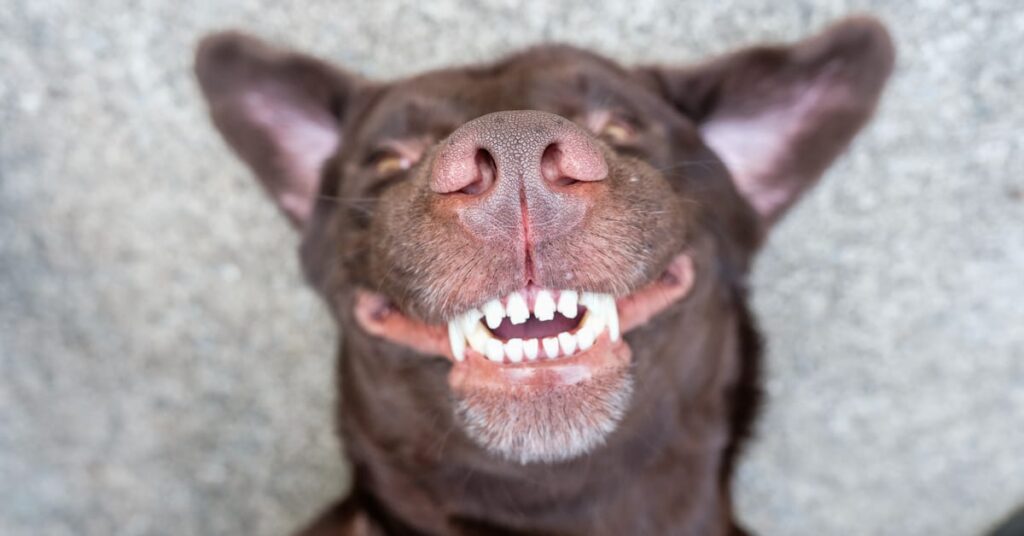
Poor oral hygiene is probably the number one cause of your dog’s bleeding gums. Many dog owners, even good ones, don’t realize that’s it’s also important to brush your dog’s teeth and get regular dental checkups.
As a result, plaque and tartar will build up on your dog’s teeth and around the gumline. If this goes untreated, it will cause inflamed gums and overall health problems. You might notice this is happening because of your dog’s bad breath, but it can lead to more serious problems.
Inflamed gums, or gingivitis, is the first sign of dental disease. Gingivitis is the only reversible stage of periodontal disease, so if your dog has it, you’ll want to get it treated before it becomes more serious.
What is Stomatitis?
Stomatitis can also sometimes cause bleeding gums and inflammation of the gums. It’s a more generalized inflammation of the mucous membranes in your dog’s mouth than gingivitis, however, since it may not only involve his gums, but his tongue, the floor or roof of his mouth, and the inner surfaces of his lips too.
It’s not clear exactly what causes stomatitis, but it’s believed that it could be an overreaction of your dog’s immune system to bacterial biofilm buildup around his gum tissues. It is very painful for your dog.
In addition to the generalized inflammation of the tissues in the mouth, it can also cause your dog to lose his appetite because of the pain. You may also notice that his coat appears unkempt because he hasn’t been grooming himself. It’s simply too painful for him to do so.
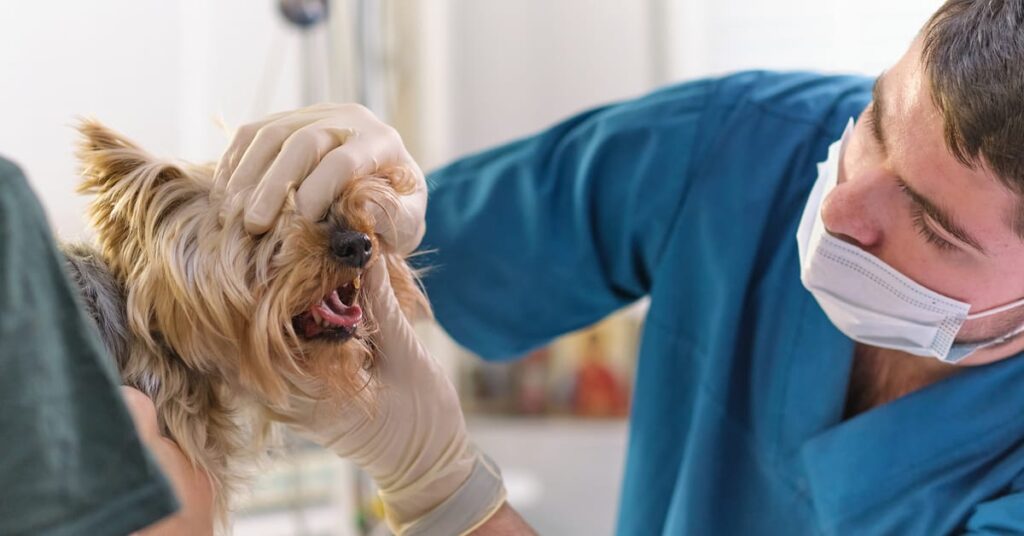
Periodontal Disease and Bleeding Gums
When gingivitis or stomatitis goes untreated, it can develop into periodontal disease. Periodontal disease is an irreversible, progressive disease that is caused by that bacterial buildup of the plaque in your dog’s mouth.
Poor oral hygiene contributes to the development of periodontal disease, but there are other contributing factors including genetics, malocclusion (that’s a bad bite), and even the shape of your dog’s mouth.
Some dog breeds like the toy dog breeds and brachycephalic breeds such as the pug are more prone to periodontal disease because of the shape of their oral cavity. Genetic factors also affect tooth shape and the form of the tooth surface which, can, in turn, contribute to the buildup of plaque and tartar.
What are the Stages of Periodontal Disease?
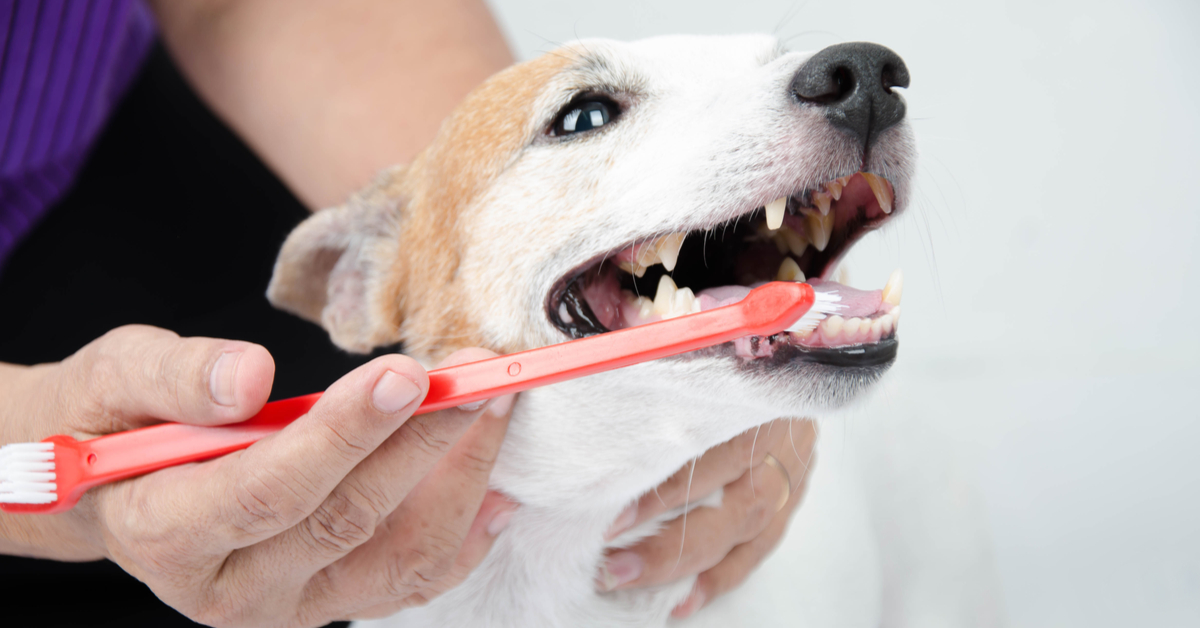
Because dogs don’t complain about their problems in obvious ways, the signs of gum disease can be difficult to spot. Your dog may appear to have beautiful choppers, but when your veterinarian takes x-rays, you find out he has lots of problems.
This is why it’s important to get an annual checkup that includes an examination of your dog’s teeth and gums. This will help your vet to find any signs of gum disease. If your vet notices gingivitis, it’s possible to get a good dental cleaning and prevent it from developing into periodontal disease.
Once gingivitis develops into periodontal disease, it cannot be reversed, only managed. That’s why it’s important to understand the four stages of periodontal disease so you can act quickly and know what to expect.
Stage 1 — Gingivitis
This is the early stage of periodontal disease, and as mentioned, it’s the only stage that is reversible.
The symptoms of gingivitis include:
- excessive drooling
- inflamed and bleeding gums
- bad breath (also known as halitosis)
With proper dental care, this stage can be reversed, and the prognosis is very good.
Stage 2 — Periodontal Disease
Once gingivitis actually becomes periodontal disease, it is not reversible. This is still an early stage, though, with only 25% or less of your dog’s tooth support having been lost.
The main support of any tooth is the bone of the jaw. In progressive periodontal disease, the bone will gradually be lost until eventually, your dog may suffer tooth loss as a result.
With Stage 2 periodontal disease, the bone loss is minimal, but your veterinarian will want to take x-rays and probe the depth of any periodontal pockets. Just like with humans, when gingivitis goes untreated, the gum pulls away from the tooth, and a pocket forms where bacteria gets trapped and causes decay.
It’s important to know the depth of the pockets to monitor the progression of the disease. The symptoms for this stage of periodontal disease are all the same as with gingivitis plus gum recession and pocket formation. With proper, ongoing dental home care, this stage can be managed well.
Stage 3 — 25 – 50% Bone Loss
At this stage, more tooth support is lost. X-rays will show that your dog has moderate to severe bone loss, and there will definitely be abnormal periodontal pockets present. This is the point at which, in addition to all the symptoms present in the previous stages, your dog may also have loose teeth.
If you can be very diligent in your daily home dental care and with getting regular dental checkups, you can manage this stage fairly well. If not, your dog will suffer tooth loss and maybe more.
Stage 4 — Greater than 50% Bone Loss
In this stage of periodontal disease, your dog has more than 50% bone loss. Your vet can see this on x-rays, and when they probe around the gum line, they will also find significant pockets.
During this stage, your dog’s tooth roots will be exposed, he will likely have many loose teeth and will probably have missing teeth as well. Additionally, it’s possible the bacterial infection that comes with periodontal disease will cause pus to ooze from around his teeth.
If your dog reaches this stage of periodontal disease, it’s likely he will need to have many teeth pulled if he hasn’t already lost them.
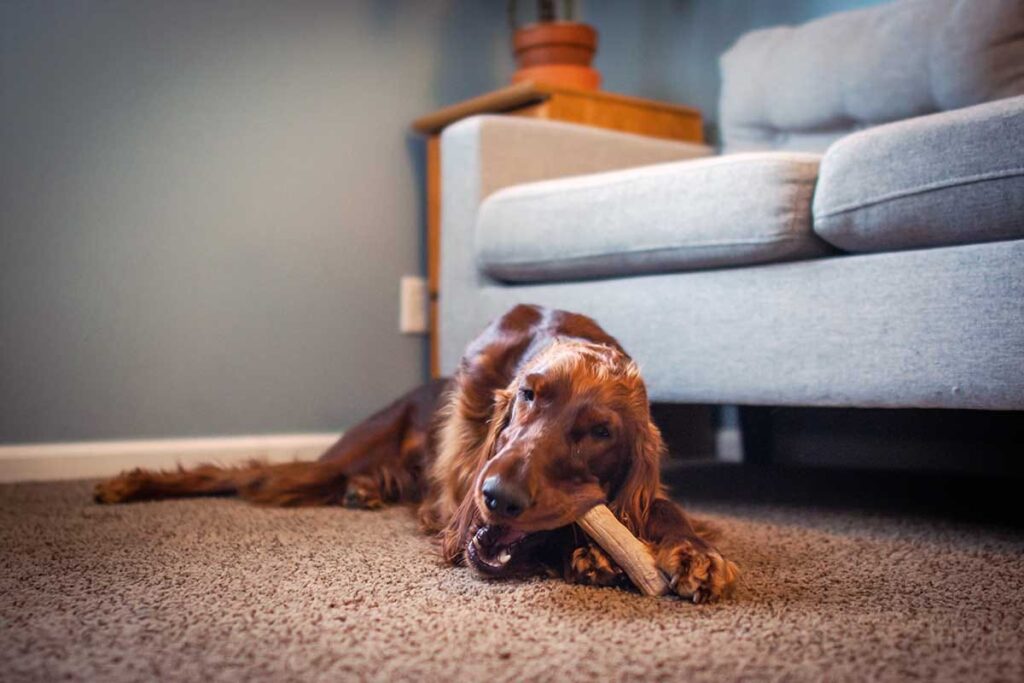
Are There Other Symptoms of Periodontal Disease?
Aside from what you might see happening in your dog’s mouth, you might also notice some behavioral changes. His mouth might be too painful for him to play with chew toys, for example, and he might also start chewing differently.
He might also pull away if you try to look inside his mouth, and if you have been brushing his teeth, he might not be willing to tolerate that anymore. If your dog is in pain, you might try using a softer toothbrush to care for his teeth as well as high-quality toothpaste.
It’s also possible he might become withdrawn or even aggressive. It’s important to remember that if your dog’s behavior is changing, it’s caused by the pain he’s feeling.
What Happens If You Don’t Treat Your Dog’s Periodontal Disease?
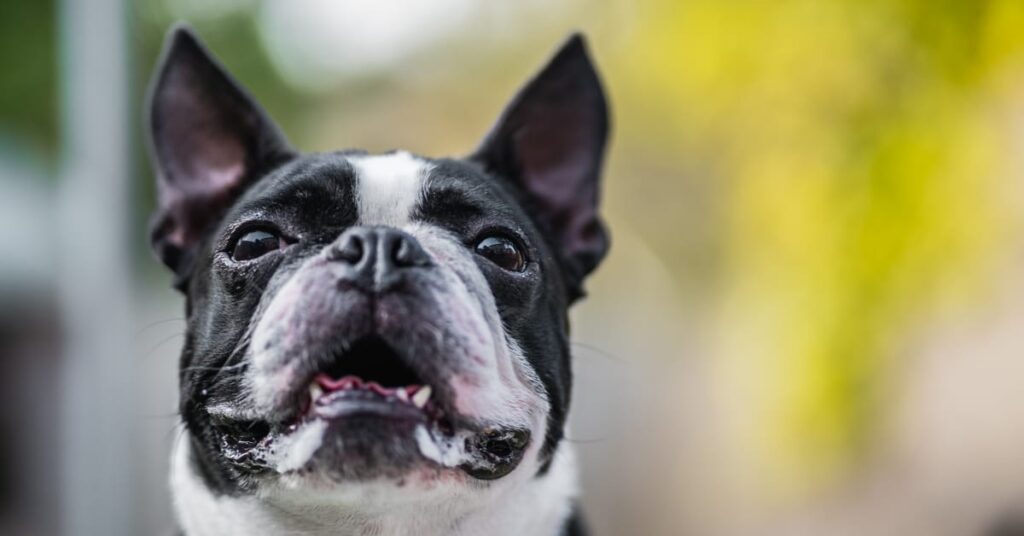
If you don’t treat your dog’s periodontal disease, it can lead to other more serious problems like heart disease or kidney disease. The gums are a very vascular area of the body, and if your dog’s gums are bleeding, the bacteria causing the periodontal disease can enter the bloodstream.
If it enters the bloodstream, it can go to the heart or kidneys where it can cause infections there. The bacterial infection in your pet’s mouth can also develop into abscesses (pockets of pus), and it can cause problems with his eyes and nasal passages.
Moreover, studies in humans suggest an increased risk for oral cancer with periodontal disease, and it’s likely also true for your dog. It’s clear that periodontal disease can definitely cause serious problems for your dog’s overall health.
Are There Other Conditions that Can Cause Bleeding Gums?
There are some other conditions that could conceivably cause bleeding gums. These include certain infections, vitamin deficiencies, cancer, and trauma.
Typically, if some other disease is causing your dog’s bleeding gums, you’ll likely also see other symptoms that don’t normally occur with periodontal disease. For example, if your dog experienced trauma, and that’s why his gums are bleeding, you might also notice that he has pale gums, particularly if he also has internal bleeding.
Some cancers can cause internal bleeding too as well as bleeding gums. This could also cause your dog’s belly to appear distended. If your vet suspects something like cancer, they may opt to take a biopsy to be certain of a diagnosis.
Luckily, these other causes of gum bleeding are not nearly as common as periodontal disease. That’s likely the cause, and it’s much more manageable than other, more serious conditions, but if you’re unsure, it’s better to be safe than sorry. Get him checked out by your vet.
How Can Pet Owners Prevent Periodontal Disease in Dogs?

There are a number of things you can do to maintain good oral health for your dog. Just like with your own oral health, daily toothbrushing is one of the best ways to prevent periodontal disease. Minimally, you should brush your dog’s teeth three times a week.
You want to start brushing when your dog is a puppy if you got him at that time. Around 6 months of age is a good time to start because that’s when they have their adult teeth in place.
Don’t brush a puppy’s teeth when they are teething since that can be painful and make them more fearful of having it done. You can use dental wipes, oral rinses, dental chew toys, and prescription dental diets to help decrease plaque and gingivitis in your dog whether he’s a puppy or an adult.
You can check the Veterinary Oral Health Council’s list of approved products to see what products you can use to decrease plaque and prevent dental disease.
Preventative Veterinary Dental Cleanings
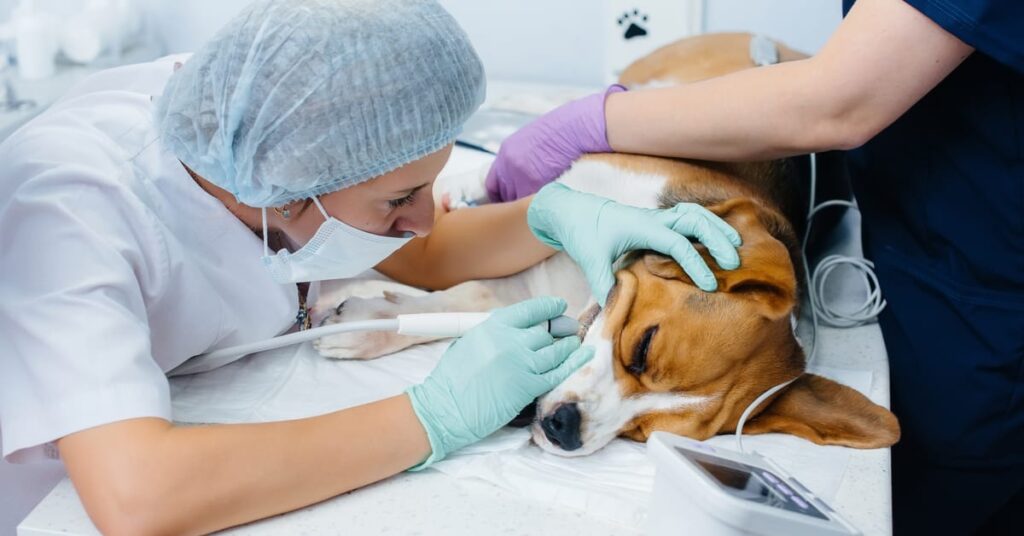
Aside from good home care, you also want to get regular dental cleanings at your vet’s office. You want to begin getting these before there are any signs of gum disease.
Toy breeds should ideally start getting their teeth cleaned at 1 year of age while larger breeds can begin at 2 years old. If you have a younger dog showing signs of gum disease, then, by all means, get him checked out by your vet immediately.
As your dog ages, the frequency of cleaning will depend on his breed, the level of any gum disease that is present, and of course, how well you practice good dental care at home. Ideally, however, you’ll want to have his teeth checked once a year.
Practicing good preventative oral health care is just as important for your dog’s oral health as it is for yours. By taking care of his teeth now, you’re preventing bigger problems in the future.
Final Thoughts

As a good pet owner who wants to take the best care of your furry friend, you don’t want to forget your dog’s dental health. By practicing good oral hygiene and getting regular professional dental cleanings, you can help keep your pooch’s pearly whites shiny and healthy so they’ll last him a lifetime!

